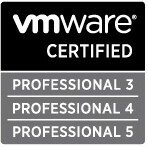Understanding Storage Device Naming
In the vSphere Client, each storage device, or LUN, is identified by several names, including a friendly name, a UUID, and a runtime name. Name This is a friendly name that the ESXi host assigns to a device based on the storage type and manufacturer. You can modify the name using the vSphere Client. […]
Understanding VMDirectPath I/O
What is VMDirectPath I/O
VMDirectPath I/O is a VMware technology that can be used with I/O hardware to reduce the CPU impact of high-bandwidth throughput workloads by ‘‘bypassing’’ the hypervisor….
Determining if Intel Virtualization Technology or AMD Virtualization is enabled in the BIOS without rebooting
Without rebooting the server if you need to check whether the server has VT technology enabled in the BIOS you can use the following cmd esxcfg-info|grep “HV Support” Refer to kb article – 1011712 Tags: VT, BIOS
Copy and Paste option is disabled in vSphere Client 4.1
Now that is bad, we cannot copy and paste from the virtual machine remote console to the system in which the vSphere client is installed KB article – 1026437 Tags: vSphere+Clinet+4.1
Types of Disks format in VMware Environment
VMware products have different kinds of disks. Some are compatible with ESX some are not. To make them compatible we have to use tools like converter OR vmkfstools 1) Zeroedthick (default) – This is the default type of disk format. All the space is allocated at creation time. Any data remaining on the physical device […]

